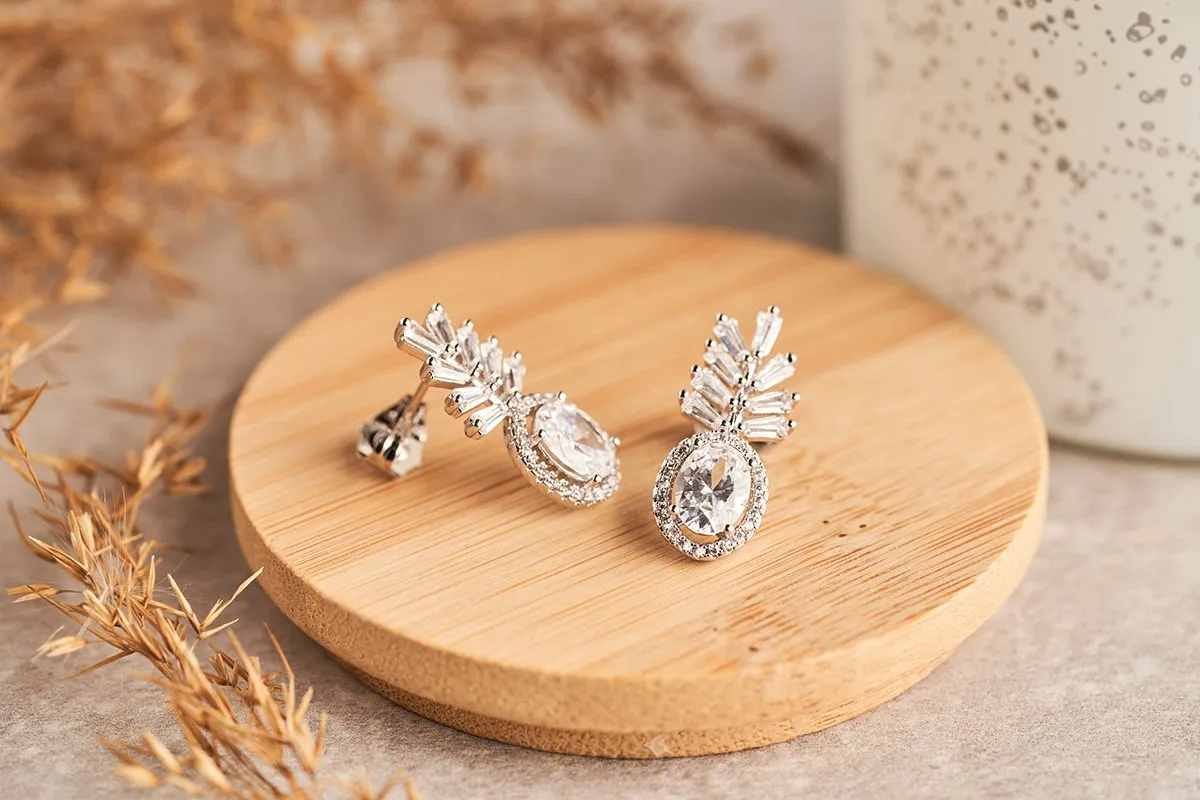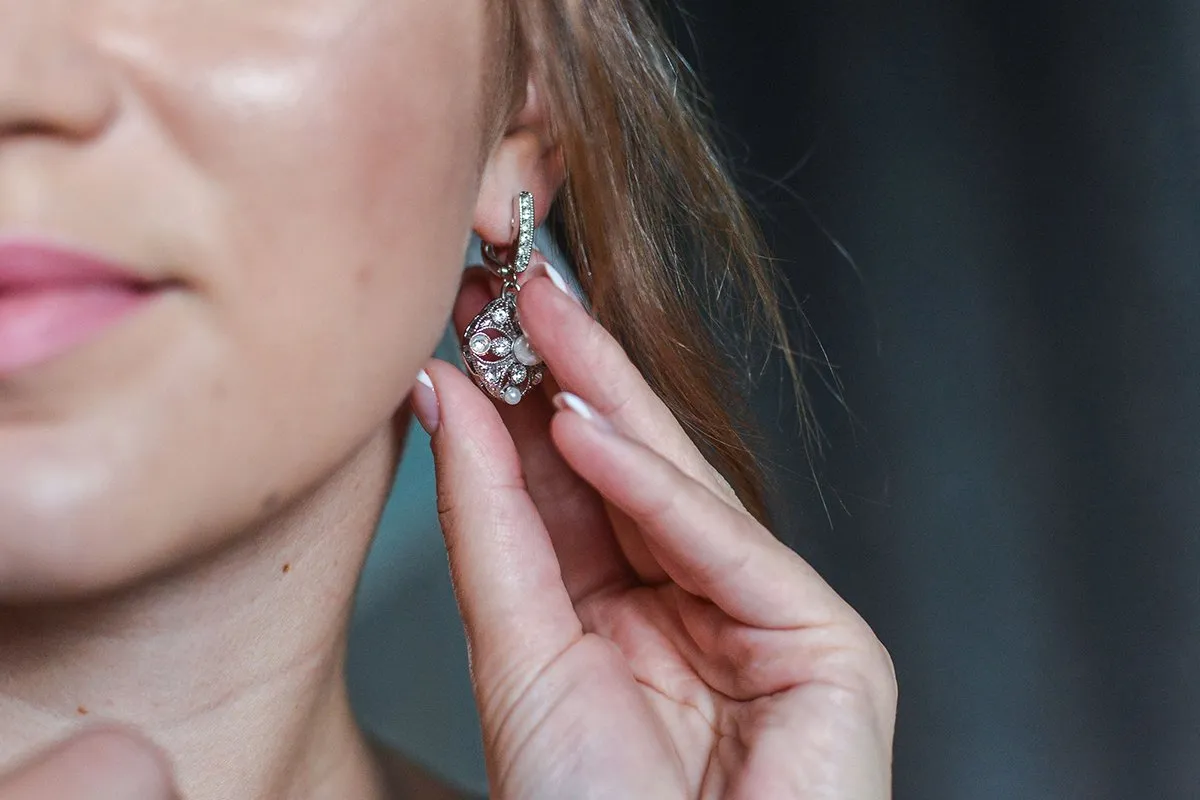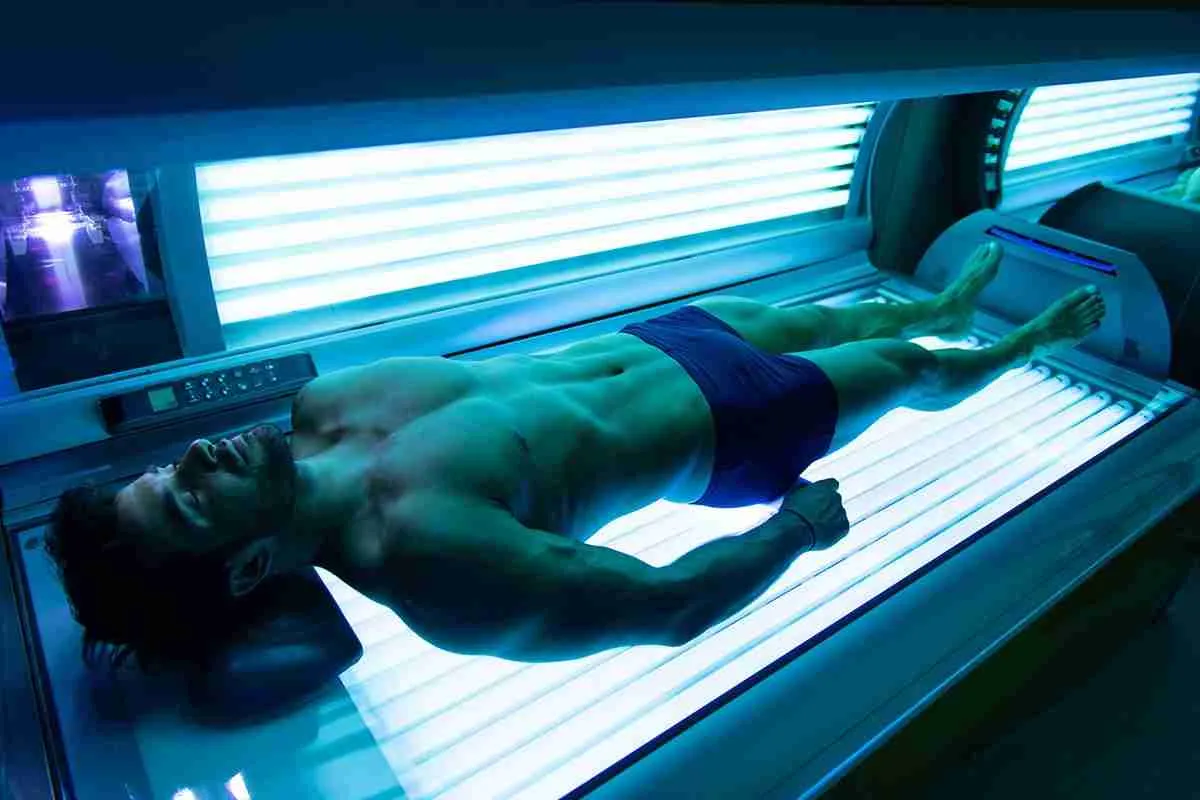You might know the feeling—you’re all set for a good night’s sleep, and as soon as you lay your head down, you realize you haven’t taken your earrings off. Sometimes, you’re just too tired to bother. Once in a while, you might contemplate how safe it is to sleep in your hoop earrings.
You shouldn’t wear hoop earrings to bed. Doing so increases the risk of injury, soreness, and allergic reactions around your ear piercing. Also, hoop earrings can easily get caught in your bedding and tear it while you sleep.
Remembering to take off your earrings before you sleep can be a hassle, but it’s worth it, given the risks. The rest of this article will explain these risks in more detail and offer some more comfortable options that you can sleep in worry-free.
Why You Shouldn’t Wear Hoop Earrings to Bed
Hoop earrings, especially large ones, aren’t the most practical sleep companion. Here are a few reasons why you should take off your hoops each time you hit the sack:
- Discomfort: A good night’s sleep might be nearly impossible with your earrings pressing up uncomfortably against your ears and the sides of your neck – and possibly misshaping your hoops in the process.
- Headaches: The constant pressing on your ears throughout the night can lead you to wake up with soreness and headaches.
- Torn bedding: There’s a chance that your hoops could get snagged in your bedding while you sleep, leaving you with torn sheets, blankets, or pillowcases.
- Injury: Moving around in bed with an earring that’s caught in your sheets, pajamas, or even your hair can cause severe injuries like torn earlobes.
- Allergic reactions: Nickel is a common constituent of inexpensive jewelry, even though many people are sensitive to it. This study found that about 30% of people with ear piercings are allergic to nickel. Signs of an allergic reaction at the site of your piercing include:
- Rashes or bumps
- Redness or change in skin color
- Itchiness
- Dryness
- Blistering
Comfortable Hoop Earrings To Sleep In
While you might not be able to sleep in your regular daytime hoop earrings, here are some snooze-friendly alternatives that are made to be comfortable, snag-free, and stylish enough for you to wear throughout the day too.
Sleeper Hoop Earrings Reduce Snags and Discomfort
As the name suggests, sleeper hoop earrings are hoops you can safely sleep in. With a diameter of about 1/2″ (about 12mm), sleeper hoops have less of a dangle and hang close to your earlobe.
These sleeper hoop earrings are a great bedtime alternative to regular hoop earrings. Made from solid sterling silver, they are nickel-free and hypoallergenic. As a result, you won’t have to worry about possible allergic reactions. Because they spin completely through your ear piercing, you can rest easy knowing that there’s less chance of a snag occurring while you sleep.
Huggie Hoops Fasten Securely to Your Earlobe
Huggie hoops are a type of hoop earrings that are designed to fit securely around your earlobe. They are smaller and usually thicker than your typical hoops, but because they ‘hug’ your earlobe (hence the name ‘huggie’), they’re much less likely to get caught in your hair or sheets while you sleep.
At just under 1/2″ (about 12mm) in diameter, these huggie hoops are bedtime-friendly and can easily be used for daytime wear. As a plus, they are nickel and lead-free and hypoallergenic, which means you can rule out the possibility of an allergy flare-up.
- Related Article: Can You Wear Jewelry in a Tanning Bed?
Be Aware of Your Earrings’ Components
You might want to consider wearing sleepers or huggies made from pure metals like gold, silver, and stainless steel for even more peace of mind. The likelihood of developing an allergic reaction to any of these metals in their purest form is rare. While they might come with a higher price tag, the cost might be worth a comfortable night’s sleep and a rash-free piercing.
There are ways to test the purity of your jewelry at home. However, your surest bet is to consult a trusted jeweler. Here are a few things to look out for when buying gold, silver, or stainless steel earrings.
Pure Gold Earrings Reduce Allergic Reactions
While some people believe that they are allergic to gold, what they are actually sensitive to are the trace amounts of nickel that is sometimes used to whiten or strengthen gold pieces.
To be safe, aim for earrings that are at least 18 karat gold. This means that they contain 75% gold and 25% other metal. 24 karat (pure gold) is 99% gold, meaning it includes less than 0.01% other metal.
Here are a few tips on how to identify a real gold piece:
- Look for the gold hallmark: Jewelers are required to indicate the karats of gold pieces to help determine their purity and value. Markings such as ’14K’, ’18K’ or ‘999’ (99.9% gold content) are indicators of the purity of a gold item. Avoid pieces with the stamp ‘GP’ (gold plated), ‘GEP’ (gold electroplating), ‘HGP’ (heavy gold plate), and pieces advertised as being 1/20-1/20 gold or gold-filled.
- The float test: At a density of 19.32 g/ml (grams per milliliter), pure gold is heavy and will sink in water. When placed in water, a gold piece that floats is likely fake or gold-plated.
Sterling Silver Is a Popular Alternative to Nickel
Silver jewelry comes in three grades: pure silver (99.9% silver), sterling silver (92.5% pure silver mixed with copper), and silver-plated. Pure silver alone cannot be used to make jewelry as it is too soft and can bend easily. Sterling silver and silver-plated jewelry may sometimes contain traces of nickel.
Here are a few ways to identify a sterling silver product:
- Look for markings or stamps: Silver pieces have stamps on them that specify the silver content. For example, in the United States, markings such as ‘925’, ‘.925’, or ‘92.5’ indicate that a piece contains 92.5% silver and 7.5% other metal.
- The magnet test: Silver is a non-magnetic metal. Therefore, a magnet should not attract a sterling silver piece. Silver jewelry that is attracted by a magnet is likely made of some other metal like steel.
Stainless Steel Jewelry Is Hypoallergenic
Stainless steel is an affordable hypoallergenic alternative to jewelry made from precious metals. While stainless steel rarely causes an allergic reaction, not all stainless steel jewelry is nickel-free: some high-quality stainless steel pieces consist of about 9% to 28% nickel. However, this is not enough to trigger a nickel allergy.
Unlike silver, stainless steel is magnetic. The magnet test is one way to determine if your earrings are made of stainless steel. Place a magnet onto the earrings that you want to test. If they stick onto the magnet, they are likely made of stainless steel.
Summary
Sleeping in hoop earrings is not recommended as it can cause injury, allergic reactions, or tear your bedding. Sleeper hoop earrings and huggie hoops are a safer bet for hoop earrings that you can sleep in.
To lower the chances of an allergic reaction, go for hypoallergenic sleepers or huggies made from gold, silver, or stainless steel. There are ways to test the purity of your jewelry at home, but the surest way to determine how pure they are is to have them assessed by a trusted jeweler.
What To Read Next:







